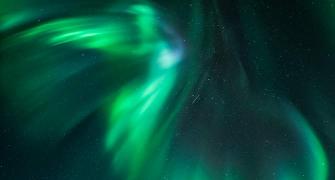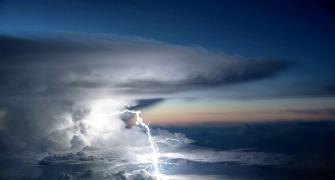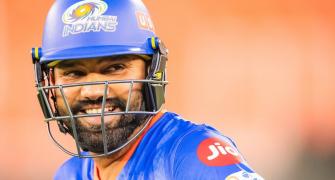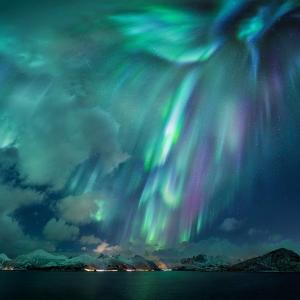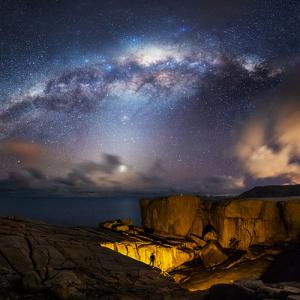Thank heavens for these images!
From a mesmerizing panorama of the aurora borealis in Iceland to a beautiful image of Comet Neowise, the Royal Observatory’s annual Astronomy Photographer of the Year competition has again produced some truly astounding images.
Run by the Royal Observatory Greenwich in London in association with BBC Sky at Night Magazine and now in its thirteenth year, the competition this year received over 4,500 entries from around the world.
The competition winners will be announced on September 16 at an online award ceremony, and displayed in London's National Maritime Museum that same month.
Here’s our favourite images from this year’s batch.
Harmony
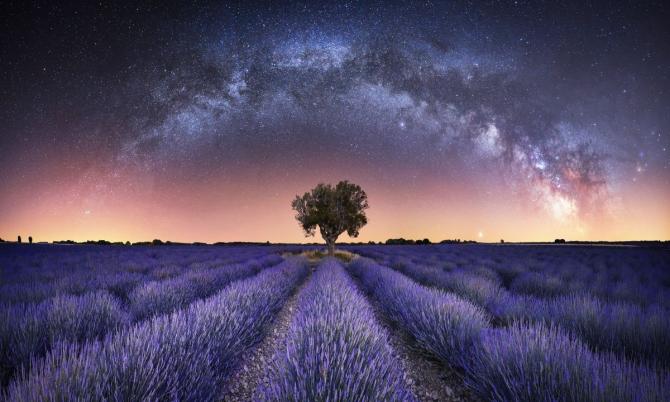
The image depicts a mesmerising panorama of the Milky Way over the lavender fields in Valensole, France. The colour tones and the lines of the fields are truly amazing, even though the light pollution is clearly visible over the whole area. Photograph: Stefan Liebermann/Astronomy Photographer of the Year 13
Aurora in Murmansk

Capturing the polar lights in Murmansk wasn’t an easy feat for the photographer because of the bright lights in the city. To photograph the Aurora Borealis in Murmansk, you must wait for a very strong solar flare. The photographer was able to capture the Aurora over the Kola Bay after several attempts and many hours of waiting and wanted to showcase this optical phenomenon in an urban landscape. Photograph: Vitaliy Noviko/Astronomy Photographer of the Year 13
Bicolour Veil Nebula
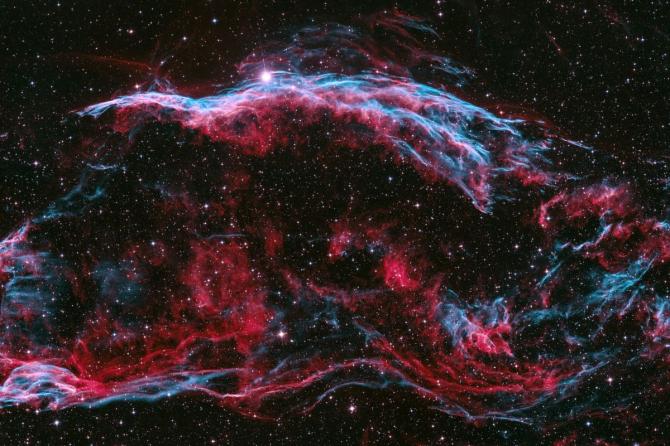
The Veil Nebula complex is the remnant of a giant supernova explosion. This image shows only a part of the complex as the entire nebula is around 6 times the diameter of the full Moon. Photograph: Péter Feltóti/Astronomy Photographer of the Year 13
Château de Chambord

This magnificent château in Chambord, Centre-Val de Loire, France was an amazing location chosen by the photographer’s best friend and mentor Ralf Rohner, but it proved to be a challenging one as the castle had intervals of illumination with a minute’s pause every 15 minutes. Photograph: Benjamin Barakat/Astronomy Photographer of the Year 13
Comet Neowise over Stonehenge
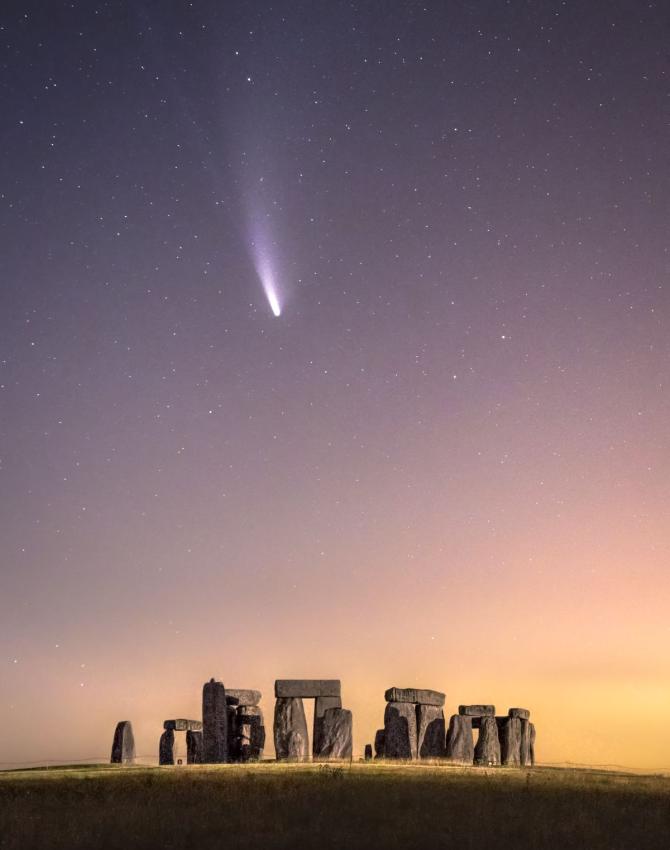
The image depicts the Comet NEOWISE passing over Stonehenge in the United Kingdom. The orange glow is light pollution from the nearby villages of Durrington and Larkhill, and a passing lorry very kindly painted the rocks with light. For the photographer, the thought that this historic site did not exist when the comet NEOWISE last passed the Earth is quite fascinating. Photograph: James Rushfort/Astronomy Photographer of the Year 13
Iceland Vortex
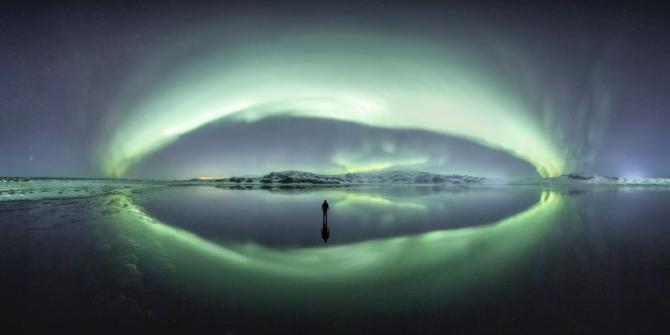
This is a 250 panorama of the Aurora Borealis in Iceland. The photographer came across this estuary that reflected the sky perfectly on a well below freezing winters night, and captured the panorama first, and then took a shot of himself out on the ice. For the photographer this is one of the most amazing aurora images that he has ever captured, and it sums up an awe-inspiring trip to Iceland in wintertime that also emphasized the feeling of being just a tiny part of the planet’s existence in the face of a very powerful natural environment. Photograph: Larryn Rae/Astronomy Photographer of the Year 13
Milky Way rising over Durdle Door
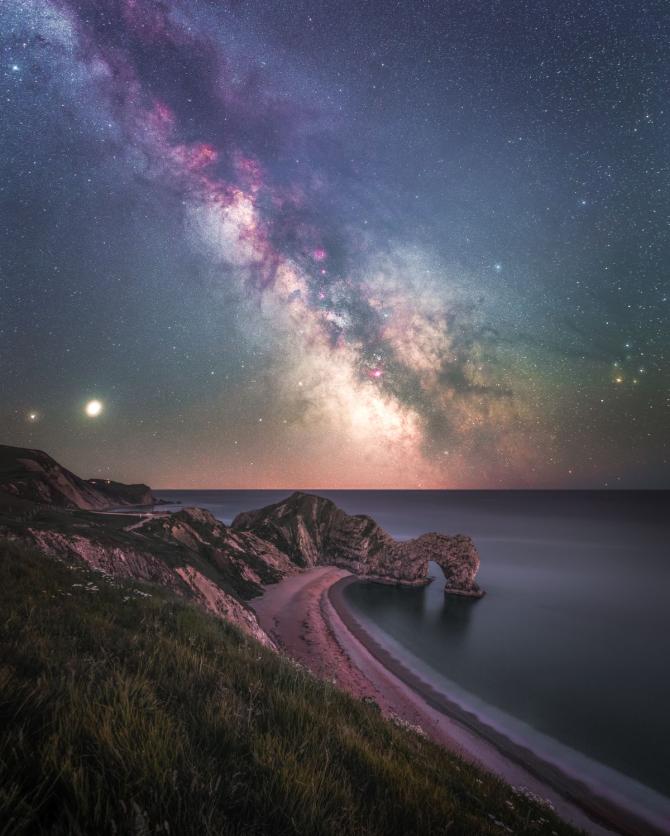
The Milky Way is rising over Durdle Door. This is a perfect spot for astrophotography as the landscape is so fascinating and aligns with the Milky Way core during a few months of the year. Saturn and Jupiter can also be seen to the left of the frame, just above the horizon. Photograph: Anthony Sullivan/Astronomy Photographer of the Year 13
Sunrise of the Magic City
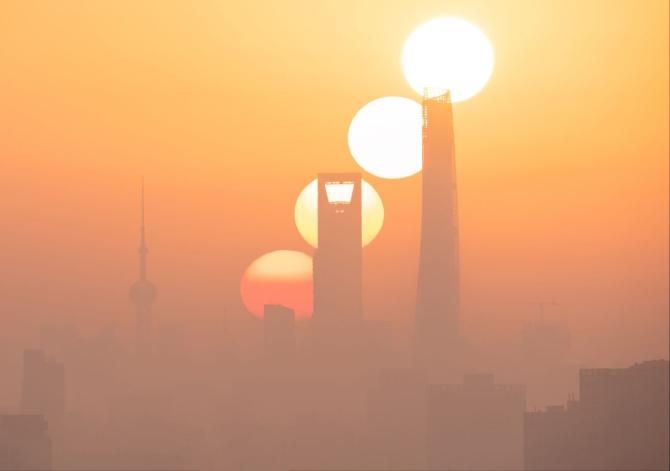
Shanghai is one of the most economically developed cities in China. The photo is taken 16 kilometres away from Lujiazui financial district. Every year there are only a few weeks when photographers can capture the scene of the Sun rising the Central Business District (CBD). The photographer waited for a few days and finally witnessed the Sun rising from the most prosperous area of Shanghai on a heavily polluted morning. Photograph: Jiajun Hua/Astronomy Photographer of the Year 13
The Full Moon in Moscow
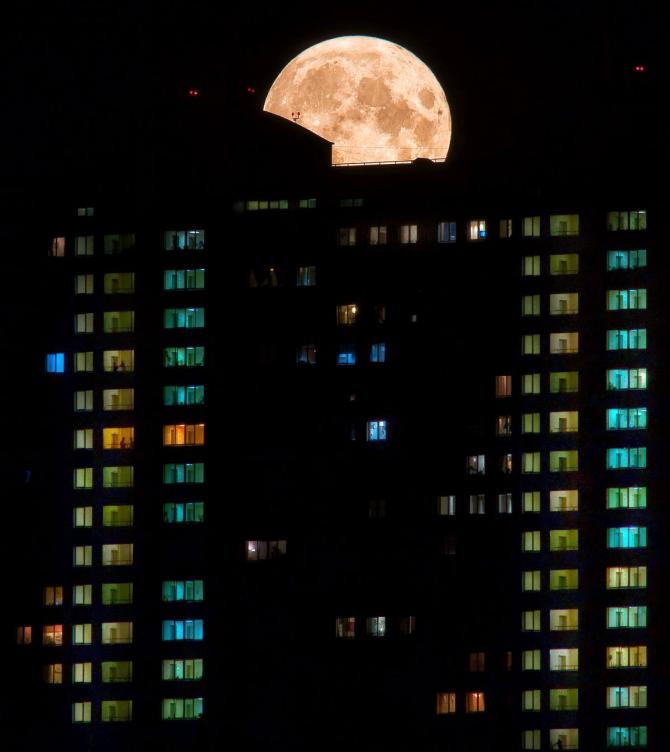
Observing the full Moon rising in the city is quite an exciting event. The photographer tries to capture this beauty every month, though this can be difficult in Moscow as sometimes it is too cloudy. The Full Moon in July is called the ‘Thunder Moon’ because of the frequency of thunderstorms. The photographer took this shot in the modern stylish park called Hodynka. This place was used as an airfield and now Hodynka is built up with housing. Photograph: Anna Kaunis/Astronomy Photographer of the Year 13
Star trails over the Lujiazui City Skyline
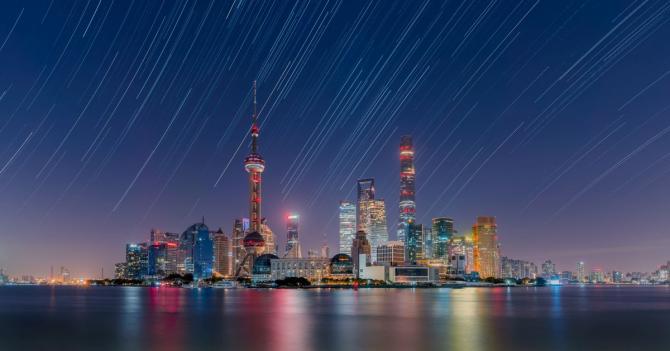
This image shows star trails over the Lujiazui city in Pudong District and you can even distinguish the Belt of Orion. Lujiazui is the most prosperous place in Shanghai, China and the light pollution is very heavy but if the weather is clear, you can see the stars. The photographer captured this photo on a very clear autumn night. The beautiful starry sky is above us, and even if you live in a city, and you can still look up at it. Photograph: Daning Kai/Astronomy Photographer of the Year 13
Pleiades Sisters
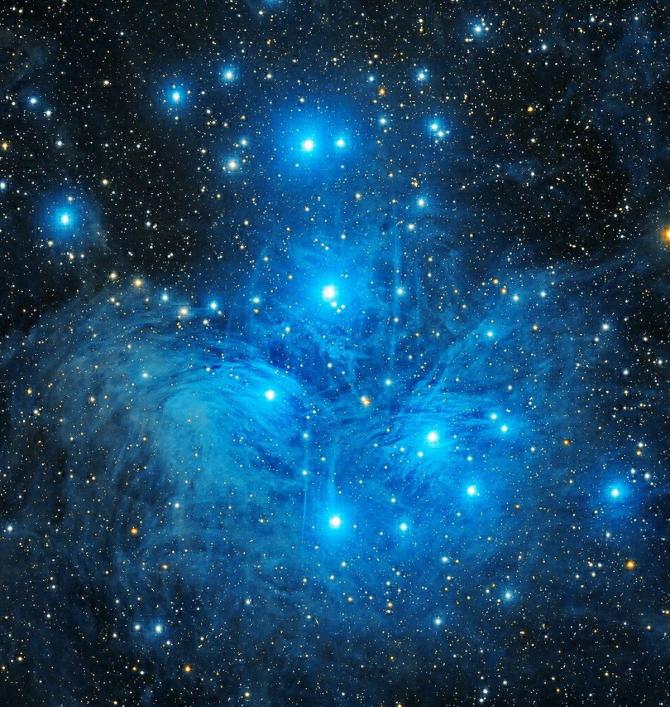
This is an outstanding image of shining stars over the photographer’s region in winter. The Pleiades, also known as the Seven Sisters and Messier 45, is an open star cluster containing middle-aged, hot B-type stars in the north-west of the constellation Taurus. It is the nearest star cluster and Messier object to Earth and it is the cluster most obvious to the naked eye in the night sky. Photograph: Jashanpreet Singh Dingra/Astronomy Photographer of the Year 13
The Soul of Space (Close-up of the Soul Nebula)

The Soul Nebula is one of those incredible targets that no matter where you point your telescope, there are always some incredible structures and details to be uncovered. This was the case with this image. With 14 hours of exposure, faint details and structures deep within the nebula began to emerge. Photograph: Kush Chandaria/Astronomy Photographer of the Year 13
The Tumult of the Sun

To select this image the photographer checked several thousand images from the Solar Dynamics Observatory collection. The turbulence inside this image is magnificent. The photographer used a combination of three wavelengths but there was a problem in combining the three spectrums. Each one presented it differently – if the brightness difference is large, the dimmer spectrum may not be seen as well. Photograph: Hassan Hatam/Astronomy Photographer of the Year 13
Waterfall

This waterfall is in the middle of nowhere in Lapland, but the closest city is Arvidsjaur. It was very cold and while the photographer was waiting for the aurora to start, she put the camera outside to capture the star trails. The last few frames caught the start of Northern Lights and the photographer decided to merge all the frames and got this exceptional result. Photograph: Anna Dobrovolskaya-Mints/Astronomy Photographer of the Year 13
A Daytime Transit
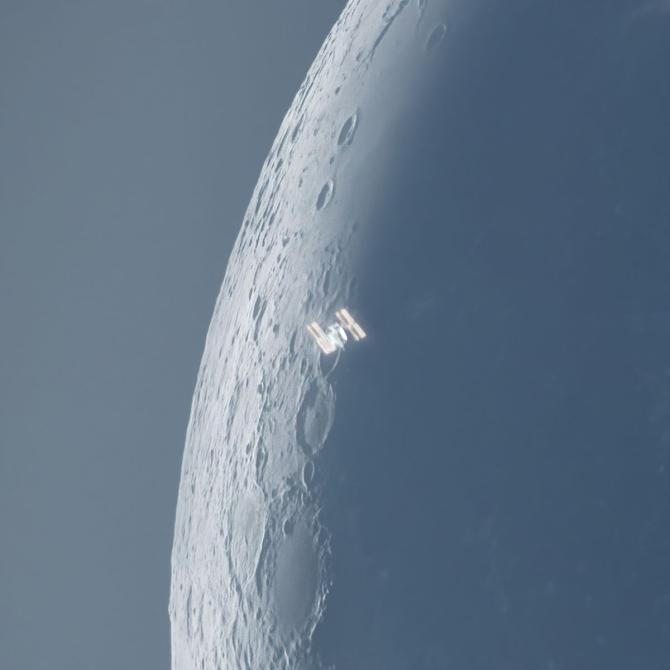
This atmospheric image shows the International Space Station transiting a very slim waning crescent moon during broad daylight. The photographer used two cameras and two telescopes to capture a luminance frame including the ISS, and the scene in colour. Photograph: Andrew McCarthy/Astronomy Photographer of the Year 13
















